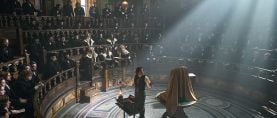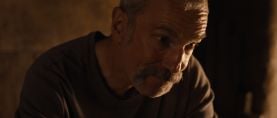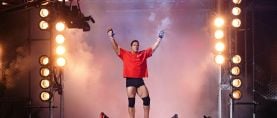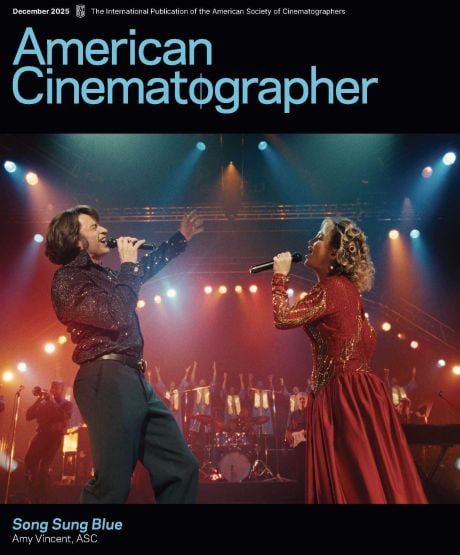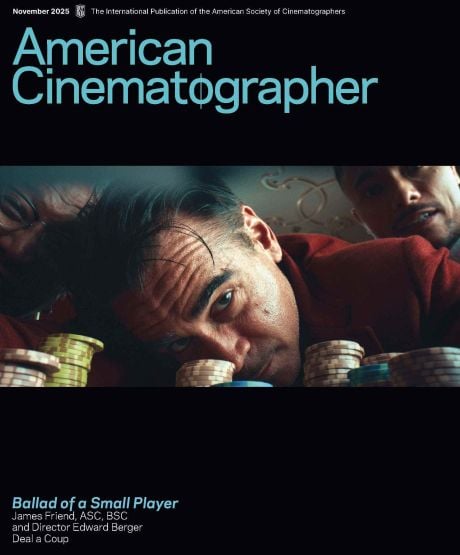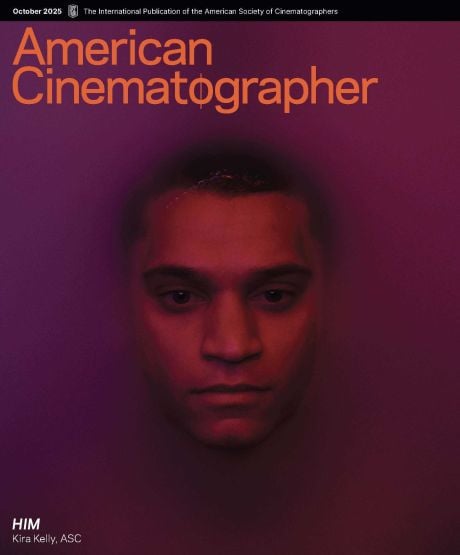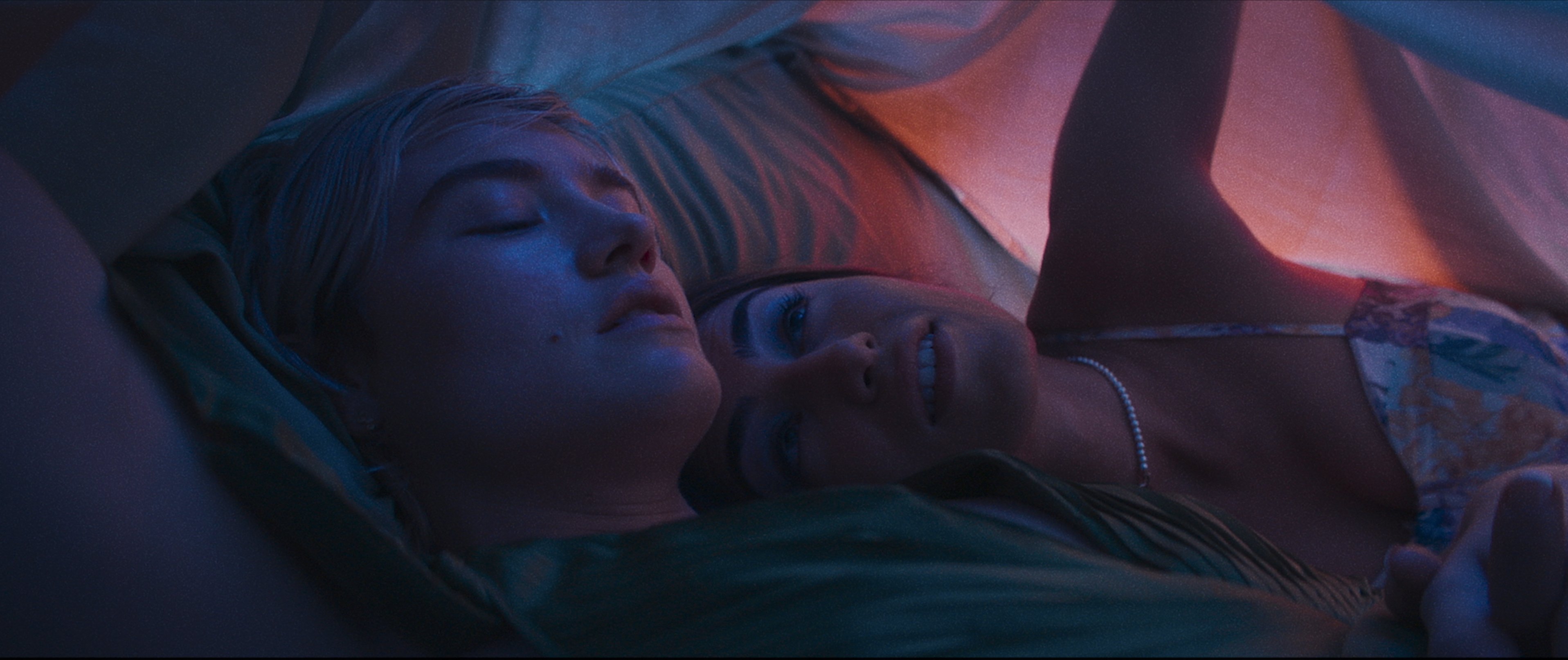
Bone Lake: Crafting a Surreal, Seductive Look for an Erotic Thriller
The film's cinematographer shares the lighting plan for a strange and stylish second-act scene, and breaks down his aesthetic approach.
Bone Lake takes the audience on a dark, hilarious and seductive journey. A couple’s romantic vacation in a lakeside mansion is interrupted by a mysterious, beautiful couple and spirals into a nightmarish labyrinth of sex, deception and manipulation, with terrifying secrets behind every locked door. When I was first approached by director Mercedes Bryce Morgan, I was immediately hooked by the idea of collaborating on another film together and evolving our visual style and approach, particularly for this story. The script for the erotic survival thriller felt provocative and tongue-in-cheek, with countless lurid revelations, and excited me to explore its genre. Mercedes brought a unique perspective and tone to Bone Lake — one that blends self-aware humor, lusty sensuality and bloody terror — and she fostered an extremely collaborative and thorough process during preproduction.
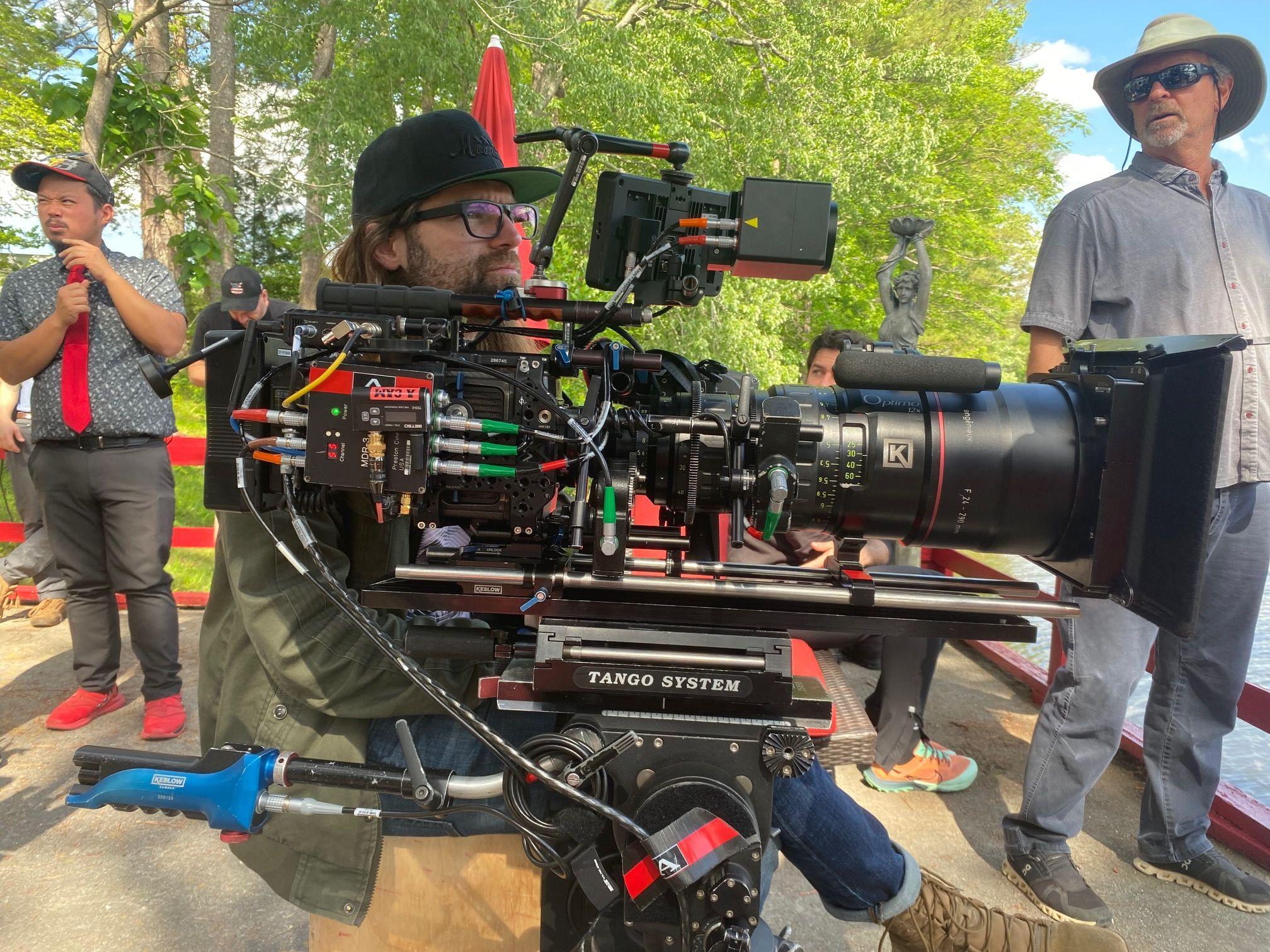
The film navigates themes of love and desire; duality and mystery; and appearance vs. reality; all through a playful, wry gaze. We wanted the visuals to embody those themes and tones, and we developed a comprehensive visual bible and shot list in prep to articulate the arc of the lighting and camerawork that included a mixture of GIFs, photographic references and videos we shot with the Artemis digital viewfinder. I engaged with shot design first, spending a lot of time trying to understand the beats of the story and the intention of the camera. From there, my conversations with Mercedes and our production designer, Kendra Bradanini, led us to develop a more defined color palette, which influenced my approach to the lighting. I articulated this lighting approach in a scene-by-scene breakdown for quick reference as we crafted the film; this became my guiding document during the process, though we did sometimes pivot from our set plan whenever we discovered the magic of a given moment.
A Strange Scene at Sunset
The scene I detail here was uniquely challenging for my crew and me, but we feel that in the end, it delivered evocative results. This scene intercuts between all of our main characters at a lakeside mansion as tension mounts: In the bedroom, it features an intimate exchange in which Sage (Maddie Hasson) reveals an emotionally charged secret about past infidelity to Cin (Andra Nechita); in the living room, Will (Alex Roe) menaces Diego (Marco Pigossi).
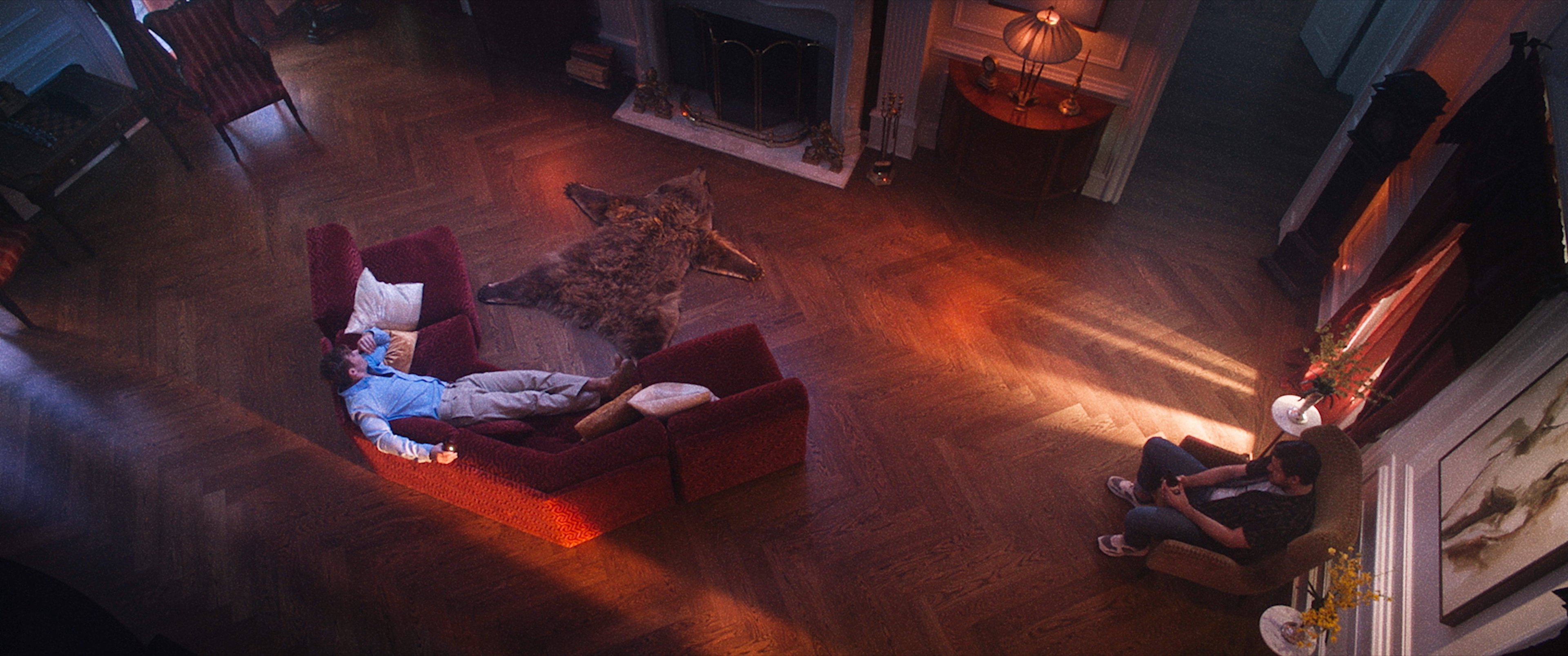
Visually, Mercedes wanted us to take this point in the film into fully surreal territory. Some of the characters take MDMA in the scene, which afforded us a greater degree of subjective creative license. And it was set during sunset, which allowed us to make use of shafts of light, rain, smoke and a lot of color blending. The scene also follows a big second-act reveal, and adds to the array of other stylistic flourishes — our use of probe lenses, zolly shots, whip pans, match cuts and expressive lighting — that are featured during this stretch of the film's runtime.
We layered the movie with a pervading, brooding darkness, tinged with a hazy atmosphere, aiming to leave the audience unsure of what lurks around in the shadows. Our second-act lighting moves from the grounded naturalism of the first act to colorful, expressionistic surrealism. Our color palette moves from a singular tone in act one to that of a tritone by act three; here, our sunset look plays to the duality of the characters within the scene. We used a pale lavender; beautiful straw/amber; and accents of rich, bloody reds to create a seductive, elegant and haunting mood. We collaborated closely with our art department to ensure that our color palette would be baked into the film's lighting and design, and we used curtains, sheers and lamp shades as part of that approach.
To capture our desired shafts of light, sunset colors, haze and rain, we needed complete control on location. We prioritized tenting a large portion of the mansion so we could shoot day-for-night; our tents were built so that we could light from within and also use rain machines right by the windows. This involved coordination between our key grip, Nathan Cooper, and rigging key, Chris Miller, to tent a massive amount of space.
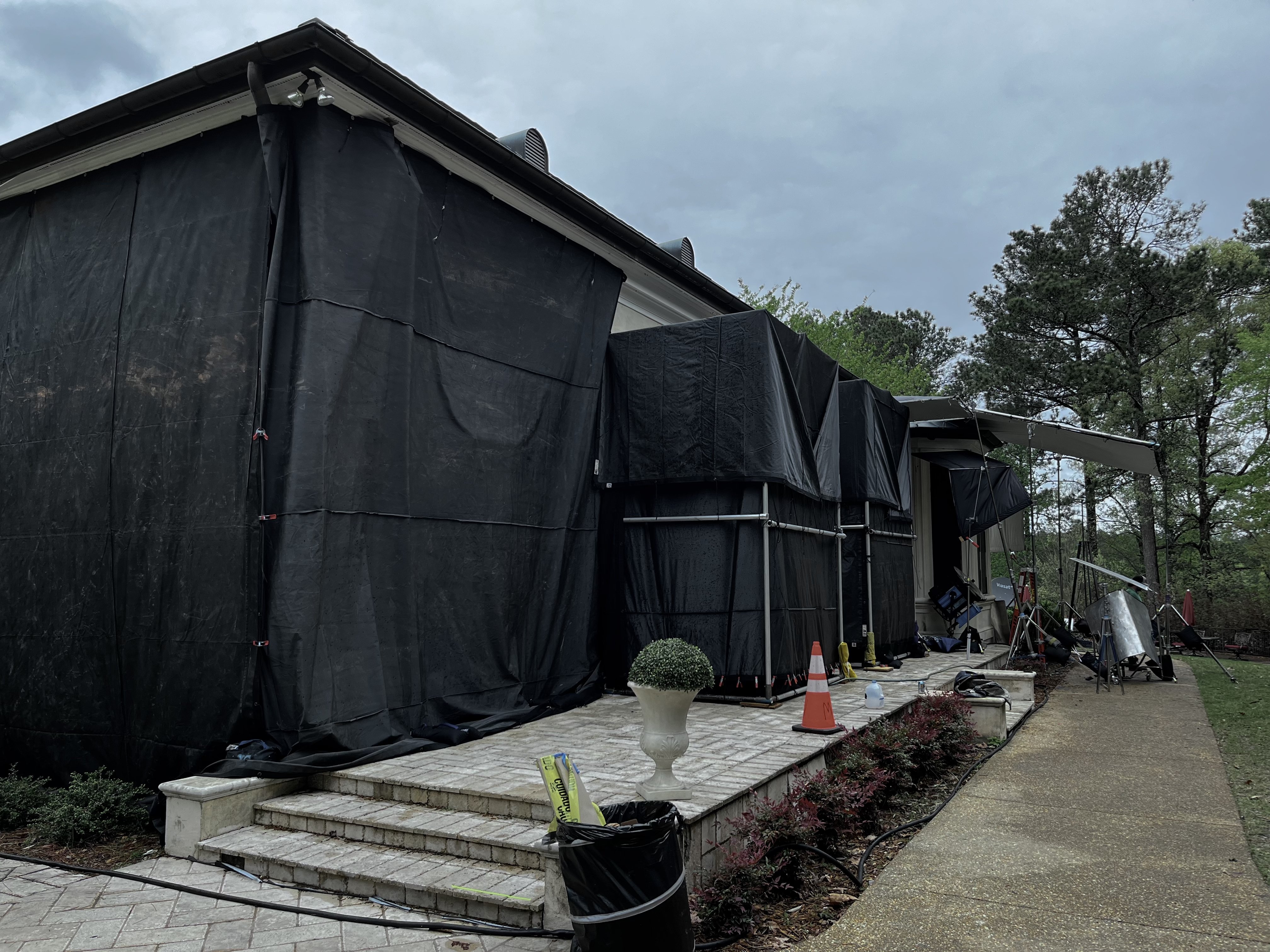
Lighting the Lakeside Mansion
Our gaffer, Taylor Schultz, was instrumental in shaping the scene's surreal look. One of our biggest challenges was in lighting for multiple cameras so that we could make the film on a blistering schedule of 18 days, while still maintaining allure, precision and contrast to glamorize the actors. In designing the light for three cameras, we looked for ways to light spatially with separation, using accents with a single source key as backlight, top light or sidelight. We would light the entire set and then let the actors inhabit the space. (See our lighting plan in the diagram below.)
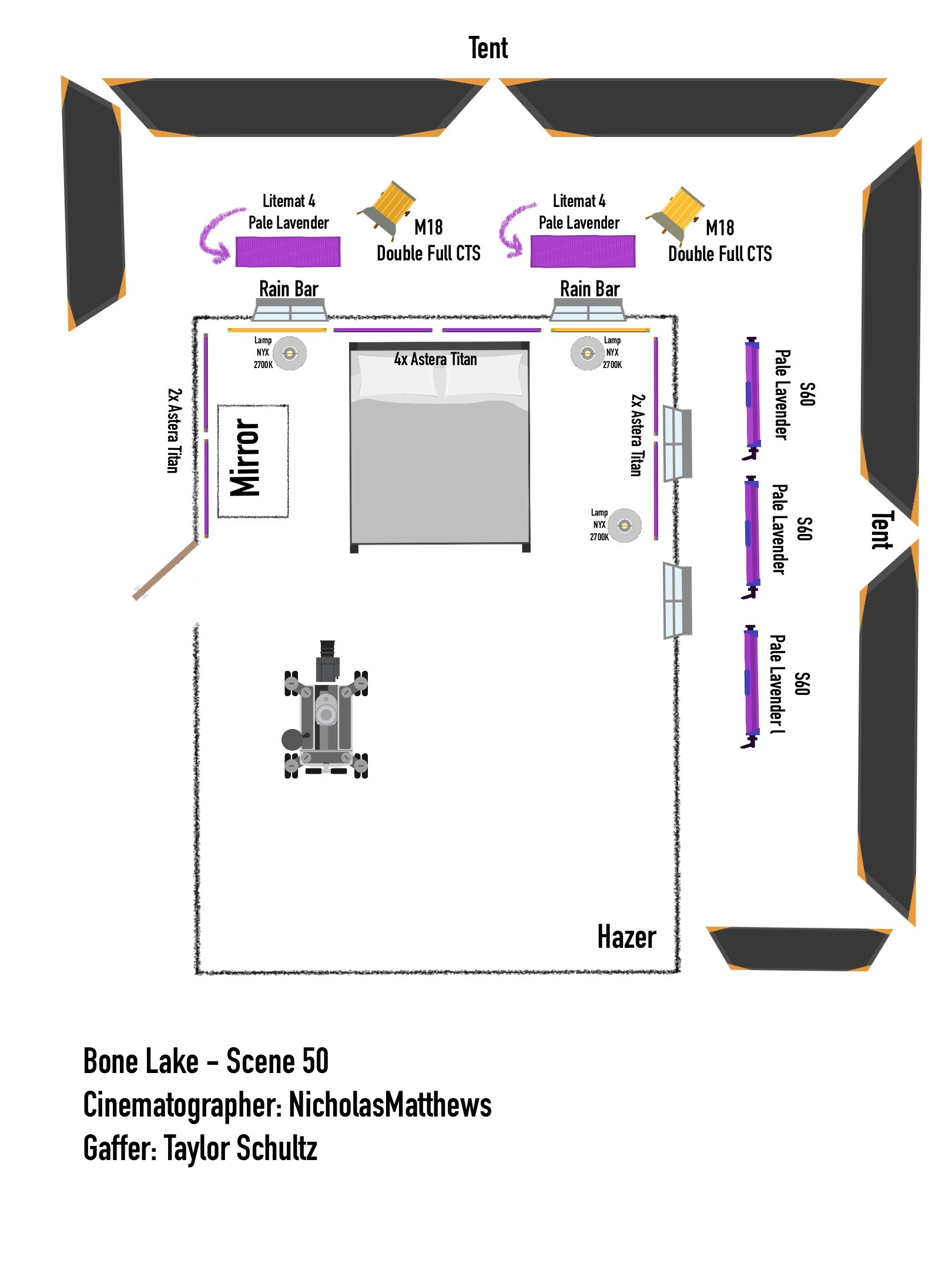
Outside the windows and within the tents, we used Arri M18s, gelled with full CTS, to create our shafts of light. This also created a beautiful bounce off of a mirror that really enhanced the scene. Additionally, we used LiteMat Spectrum 4 LED fixtures to mix some soft light coming in through the open windows. On the patio side, we used Arri SkyPanel S60-Cs as pale lavender to color the sheers.
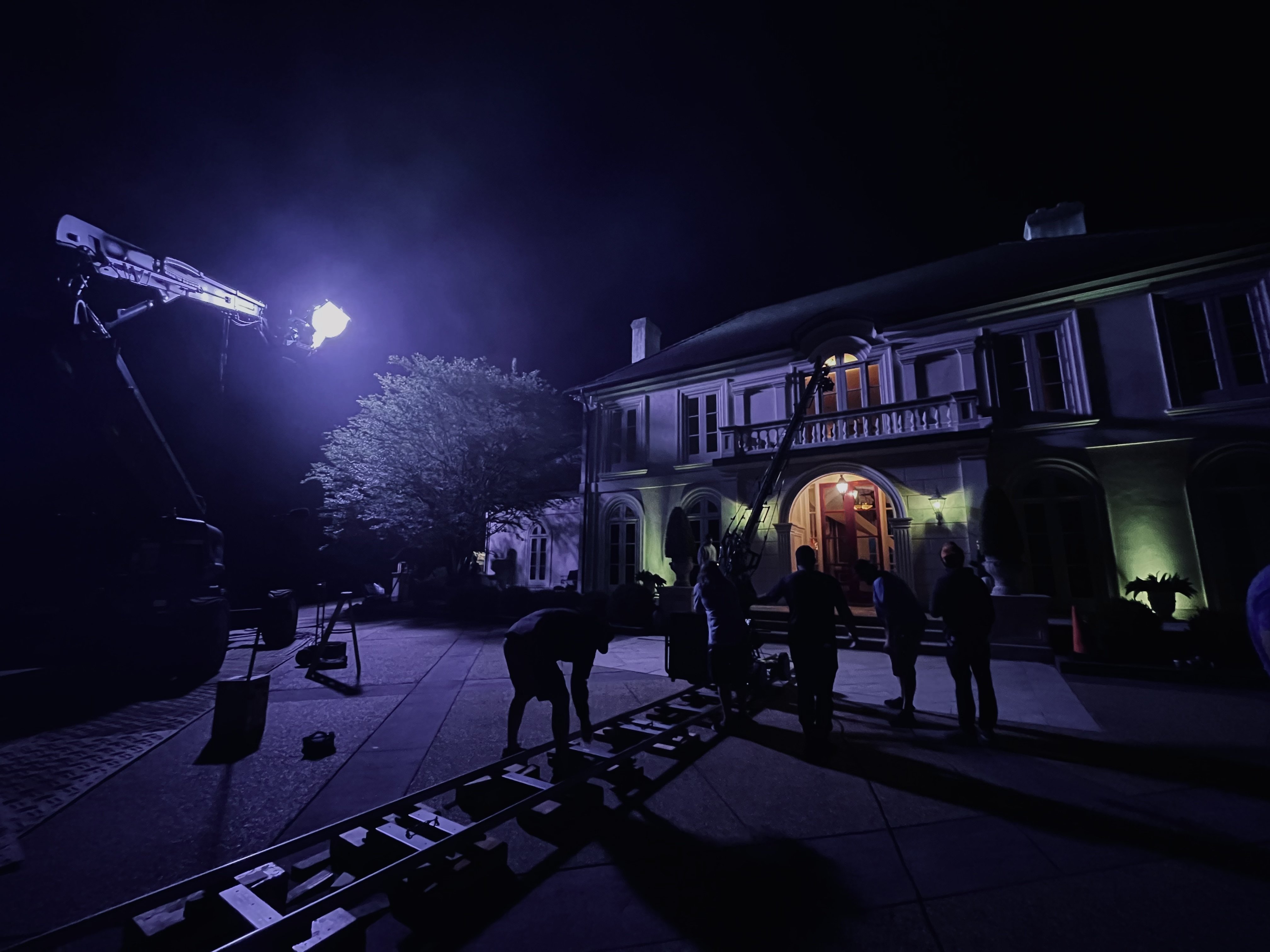
Within the room, we embedded practicals lamped with NYX Bulbs for color separation, and to paint the shadows. We lined three walls of the room with Astera Titan Tubes; these were controlled and shaped to keep them off of the walls, and afforded us complete wireless control over where the light was coming from, as well as a more elegant means of blending color. We wholly embraced the use of LEDs because of the speed and control they afford. Once the characters crawl under the bed sheets, we brought in closer sources to fill the sheets themselves, which helped create a gorgeous, colorful keylight.
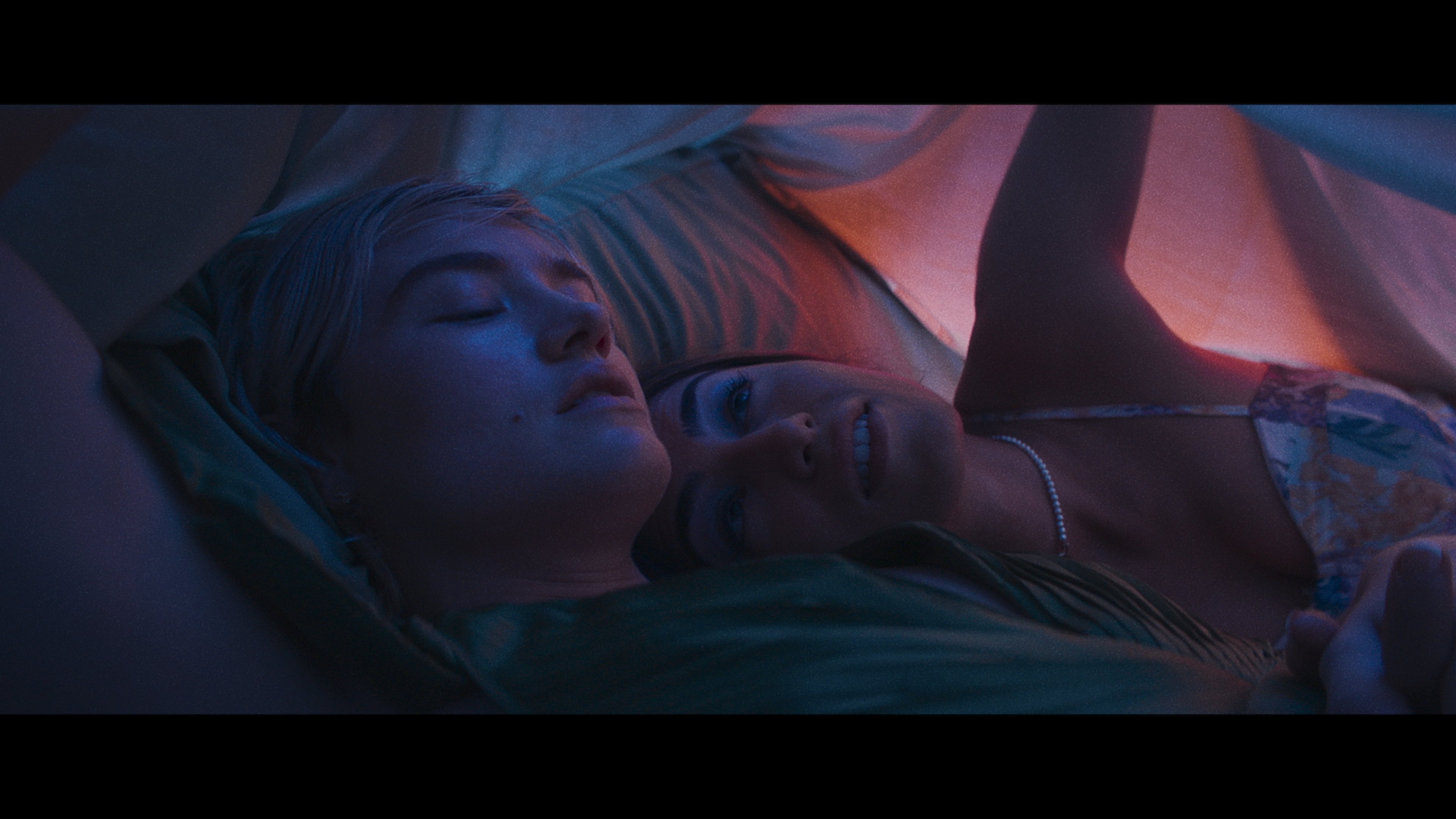
Camera Movement and Cinematic References
Our lighting references included the photography of Gregory Crewdson and Todd Hido, as well as Stéphane Coutelle’s photographic series Insomnies — all of which use color and contrast to create heightened images. In this scene, we also referenced the depiction of rain in Richard Brooks' In Cold Blood (shot by Conrad Hall, ASC), and the use of color in Pablo Larraín's Ema (Sergio Armstrong, ACC).
To propel the audience into the zany, absurd and unsettling world of Bone Lake, we treated the camera as an interactive character. We wanted our camera movement to feed into a sense of unhinged tension — both sexual and relational — that eventually spirals out. We prioritized the use of dolly, tripod, Steadicam and handheld moves; our A-camera operator, Dalton Price, was instrumental in achieving this vision. Dalton and I have collaborated on a number of films thus far, because his sensibilities are story-driven and resonate emotionally with the subject material he's given. Despite all the film's nods to '90s erotic thrillers, our primary references for camera movement and blocking were A Clockwork Orange and Barry Lyndon (John Alcott, BSC); Evil Dead II (Peter Deming, ASC); Who’s Afraid of Virginia Woolf? (Haskell Wexler, ASC); and Funny Games (Jürgen Jürges).
Image Arsenal
We elected to shoot Bone Lake on Hawk V-Lites, which are Mercedes' and my favorite anamorphic lenses. They render faces gorgeously, and shooting anamorphic allowed us to create expansive images and separation in every frame. We paired our lenses with Schneider Hollywood Black Magic filters to bring glamor into every frame, and we shot the film at 1,600 ASA to retain a film-like texture on the Arri Alexa Mini and help create our contrasty, shadow-laden mood. This approach was enhanced by Company 3 colorist Bryan Smaller, a genuine artist and collaborator in realizing our final vision for the film.
Images courtesy of Bleecker Street and the filmmakers.
